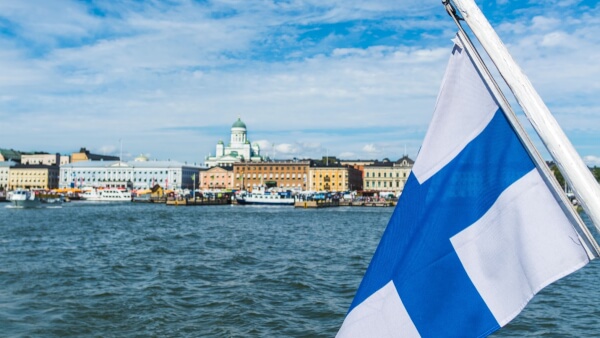Moving to Finland from the UK: Complete guide
Everything you need to know about moving to Finland from the UK. Read about visas, popular expat destinations, healthcare and more.

If you Google “Finnish school system,” you won’t find the typical expat guides and government websites that dominate similar searches for other countries.
Instead, you’ll see a series of articles from major publications centered around the same theme - how Finland’s unorthodox approach to schooling has led to one of the best education systems in the world.
In Finland, teachers are viewed as respected professionals instead of drones to governmental bureaucracy, and are largely freed of regulations. This leads to constant experimentation in the classroom, and a friendly, accessible approach to learning that serves students not as a demographic group, but as individuals.
One of the most noticeable differences is in teacher preparation, is how candidates are required to hold a master’s degree and then train in classrooms extensively. This is a stark contrast to the system in the United States, where requirements for teachers are constantly loosening and most only hold bachelor’s degrees, and typically train for just six weeks in the summer when no actual children are present in the classroom.
Some other amazing differences? Elementary school children start their education at age seven, and are never given exams for the first seven years of their schooling. The country’s students do very little homework until they’re in their late teens, and elementary school students get 75 minutes of recess per day. Most importantly, students are only subjected to standardized tests one time in their schooling, at age 16.
Finland’s achievements in education are truly historic, and the approach to schooling seems to stem from a nationwide respect for childhood.
If you’re starting a business, have a new job, or are just planning to relocate to Finland, it’s possible for your family to enjoy this modern and advanced approach to education. But how is the system structured? And how much does schooling cost?
This guide will walk you through the school stages, types and rates of tuition that are most common in the nordic country.
As we mentioned above, students in Finland don’t start required school until they’re seven. That being said, many parents choose to send their children to preschool. From that point forward, students are educated continuously until they graduate at age 18.
| School level | Age, grade, and requirement |
|---|---|
| Pre-Primary education | Age 6, compulsory |
| Comprehensive School (primary school) | Age 7-16, grades 1-9, compulsory |
| Secondary School | Age 16-19, grades 10-12, not compulsory |
Until 2015, the Finnish government ensured that all children under school age had the right to “early childhood education and care,” or ECEC. Since 2015, however, this stage of schooling has been required.
These pre-primary schools are government facilitated, and are often organized in day care centers. ECEC is based on an “educare” model, which melds academics with childcare and promotes learning through play.
ECEC content is guided by National Curriculum Guidelines, however, as with all schooling in Finland, these guidelines serve more as loose ideas than a strict script for teachers to follow.
Because this type of education is ensured by the government, schools don’t choose their students. Conversely, all children may be enrolled in their neighborhood pre-primary school. The exact process varies depending on where you live, so it’s important to find the website for your specific authority. Each local authorities website is written in English, Finnish and Swedish to make the processes easier to understand for expats and transplants.
The goal of Finnish primary school is to “support pupils’ growth towards humanity and ethically responsible membership of society.” The secondary goal is to equip students with the practical skills they'll need in life.
Comprehensive school, or basic education, is for students age seven to 16, and covers grades one to nine. As with pre-primary schools, schools don’t choose pupils, and all finnish residents are given a place at a school within their district. In many areas students may also choose to study at a different school than the one nearest to them, though that option does come with some restrictions.
All schools follow a common, national core curriculum, which is really just an outline of the basic objectives and core contents of different subjects. Teachers and administrators are free to draw up their own curriculum within that framework. That being said, students must take the same core subjects: Finnish, math, science and history. Older students may also take foreign language courses.
Regardless of what classes they take, Finnish comprehensive school students almost never have homework, and are very rarely subjected to exams. Those types of assessments are introduced at the high school level.
Secondary school in Finland has a dual structure: General or vocational education. Students are considered to have “graduated” by the time they finish comprehensive school, and then as “school-leavers” they may elect whether they would like to pursue the general or vocational track at school.
While the majority of Finnish students do choose general education, their lead isn’t by much: 40% of the relevant demographic choose the vocational track instead. Some of the most popular vocational majors are tech, communications, transportation, social services, health and sports.
Unlike comprehensive school, students aren’t guaranteed acceptance to secondary school, and schools have the right to choose their pupils. Students are typically selected based on their grade point average in basic school, though some secondary schools also employ entrance and aptitude tests. Much like an American university application, students aim to impress potential schools with their hobbies, extra curriculars and academic achievements.
The academic year in Finland is broken into two semesters: autumn and spring. The autumn semester starts at the end of August, and finishes just ahead of the Christmas holiday. Spring semester then begins in the first couple of weeks of January, and continues through May.
While Finland offers excellent free public schools, expat families sometimes choose private or international schools for their children, especially if they have no knowledge of Finnish.
The costs of these schools vary widely by academic record, age of the student and location of the school. Tuition at the International School of Helsinki, for example, ranges from €12,000 - €17,000 annually as the student moves from pre-primary school through 12th grade.
Because these schools can be expensive, it’s important to consider how you transfer money from your foreign bank account to fund your child’s education. Use Wise to get the real exchange rate and cut out expensive international bank transfer fees.
The Finnish education system isn’t only excellent, but serves as a model for the rest of the world. Moving your children to Finland is sure to a step in the right direction towards giving them the best possible education while you build your career in the nordic country.
If you’re still looking for more information, the Finnish National Agency for Education has a plethora of resources available for parents, available both in Finnish and English. Good luck in your new adventure!
*Please see terms of use and product availability for your region or visit Wise fees and pricing for the most up to date pricing and fee information.
This publication is provided for general information purposes and does not constitute legal, tax or other professional advice from Wise Payments Limited or its subsidiaries and its affiliates, and it is not intended as a substitute for obtaining advice from a financial advisor or any other professional.
We make no representations, warranties or guarantees, whether expressed or implied, that the content in the publication is accurate, complete or up to date.

Everything you need to know about moving to Finland from the UK. Read about visas, popular expat destinations, healthcare and more.

A list of the top banks in Finland, including Nordea Bank, OP Financial Group, Danske Bank, Aktia Bank and Alisa Bank.

Just moved to Finland and need to buy items for your new house? Or perhaps you’re on holiday there, and urgently need next-day delivery for an essential...